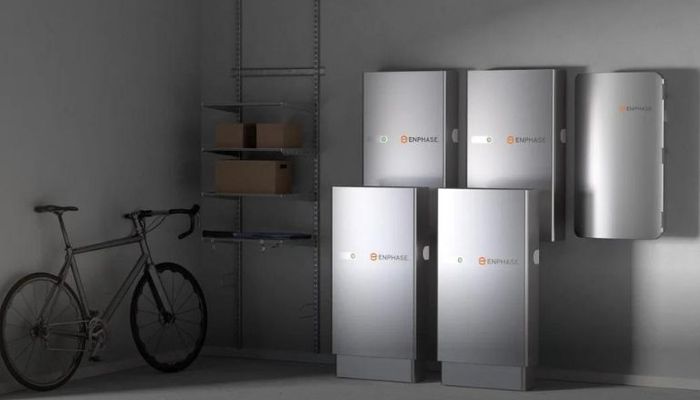The Next Frontier: Grid-Tied and Off-Grid Energy Storage
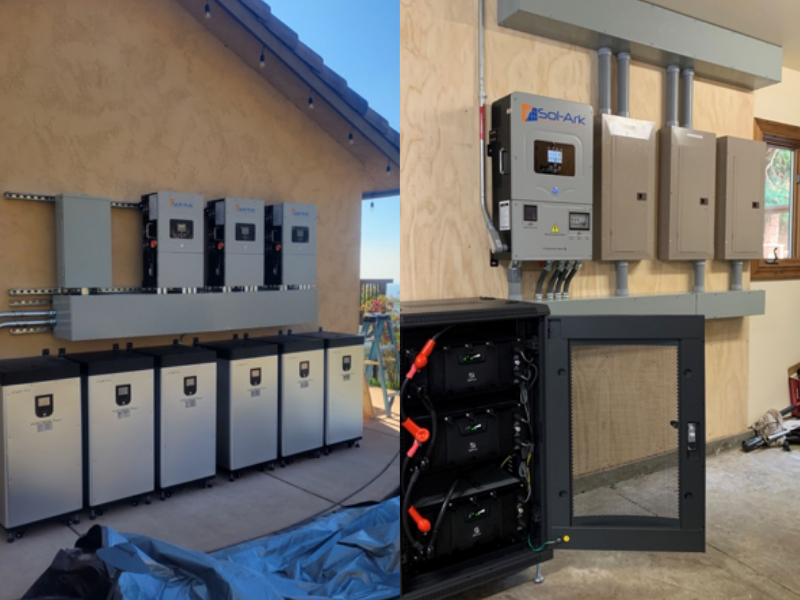
GoGreenSolar and Fortress Power (a close partner of GoGreenSolar) recently held a webinar to review grid-tie and off-grid energy storage. Today, we’ll recap the information they presented and a link to view the webinar in its entirety on YouTube.
Topics:
- History of Energy Storage
- Energy Storage Applications
- What Makes a Quality Battery?
- Sizing and Designing
History of Energy Storage
Silicon PV (photovoltaic) creation began in 1954, with solar and solar batteries following in the mid-late 1970s. Lead-acid batteries were common due to their low price, high functionality and availability and were traditionally only offered for off-grid solutions.
Technology advancements in solar inverters started net metering in 1996, enabling consumers to sell energy back to utility companies. In the early 2000s, grid-connected ESS (Energy Storage System) solutions were released, benefiting residential and industrial applications.
So what’s the future of energy storage?
The transition from lead-acid to lithium batteries has been a big change in the last 20 years. The U.S. Department of Energy (DOE) anticipates stationary energy deployments will exceed 150GWh by 2030 – a 27% annual growth rate for grid-related storage applications.
North America is the largest market for this technology at 41.1GWh of energy storage deployed.
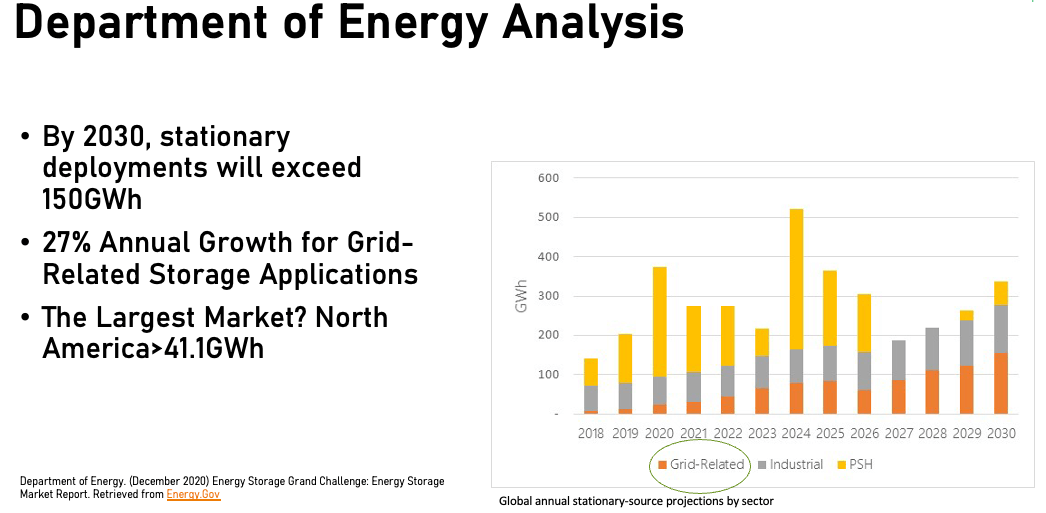
Energy Storage Applications
There are five main energy storage applications. The right solution for you will depend on where you live, your energy needs and future goals.
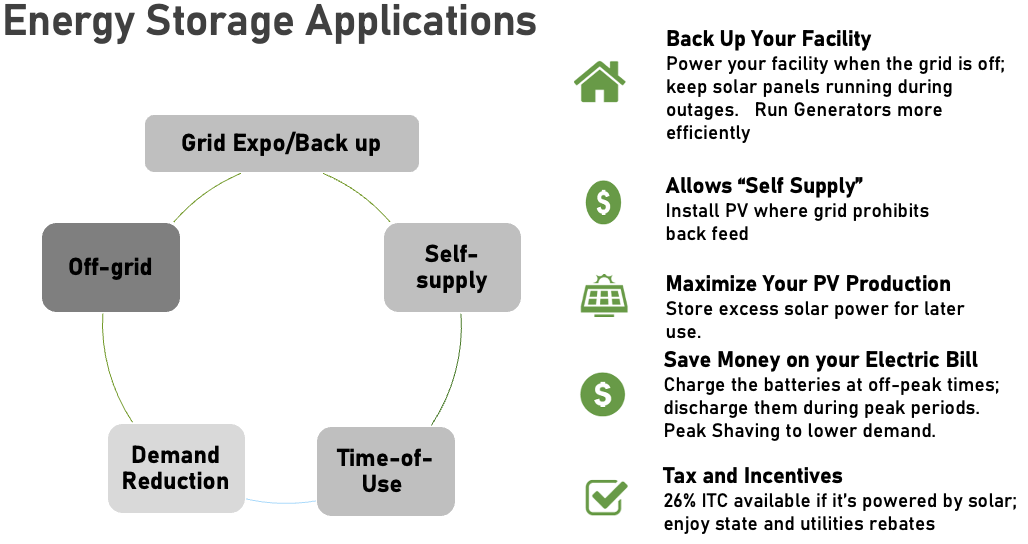
Energy Backups
Power your facility when the grid is off; keep solar panels running during outages. Run generators more efficiently.
Self-Supply
Install PV where the grid prohibits back feed and net metering.
Time-of-Use
Charge your batteries at off-peak times; discharge them during peak periods (like 4-9 p.m.) to save money.
Demand Reduction
Used primarily for commercial applications, demand reduction enables energy usage to remain below peak billing thresholds.
Off-Grid Energy Supply
Living off-grid may be your only option if you live in a remote area.
What Makes a Quality Battery?
Solar batteries are relatively new on the market. So what should you expect from a quality battery supplier?
- First, not all lithium iron phosphate (LFP) batteries are the same!
- Manufacturers use different chemical combinations which determine battery lifespan and quality consistency.
- The same manufacturer can produce batteries at different quality levels based on application (EV > Energy Storage > Telecommunication).
Fortress Power uses the highest safety standard in terms of battery storage. In addition, Fortress uses lithium iron phosphate (LFP) technology in contrast to Tesla, which uses nickel manganese cobalt (NMC) technology. While NMC batteries use bursts of energy to power cars, LFP batteries are safer and longer-lasting, offering a slow, steady charge to power homes and businesses.
Read: Choosing a Solar Battery Backup System For Your Home
Battery Cell Types: Pouch vs. Cylindrical vs. Prismatic
From the inside out, batteries contain the following components:
- The battery cell
- The cell’s chemistry
- The battery management system (the battery’s “brain”)
- The outer enclosure
There are three types of battery cells: pouch, cylindrical and prismatic.

Traditionally, solar batteries have used cylindrical cells, a low-cost option with lower longevity.
However, Fortress Power uses Tier One, automotive-grade prismatic cells due to their durability, thermal stability and long cycle life.
As mentioned previously, different batteries are used to power different applications. This graph shows the cycle lives of automotive cell vs. telecom cell batteries from a Tier One manufacturer:

When evaluating what kind of battery you’re choosing to power your solar system, ask your solar provider if they’re using prismatic or automotive-grade battery cells vs. telecom-grade battery cells. This will help you get the most bang for your buck when investing in energy storage.
Battery Management System Comparison
Now let’s go over the battery management system (the battery’s “brain”). There are two kinds of battery management systems on the market. The battery management system protects the battery from overcharging, low discharging, low temperatures, etc.
Fortress uses the highest automotive quality battery management system (BMS). The main difference is that BMS is a fuse that opens to protect the battery cells in response to high input and output power, providing a much better response time to the inverter’s inrush current.
Past providers have used a metal–oxide–semiconductor field-effect transistor (MOSFET) BMS -- a lower-quality, more affordable solution that does not have the same input/output power or response time to the inverter inrush current when the inverter is started.
Fortress Power’s digital processor-based BMS is a little more expensive than the model shown on the right here, but when investing in an energy storage system, choose a solution that uses A-grade materials vs. a lower-cost, less reliable alternative.

Enclosure Comparison
Lastly, we’ll talk about what’s around the battery – what’s protecting the battery. The Fortress uses an aluminum enclosure vs. a plastic or iron enclosure.
Aluminum enclosures are becoming more popular as they’re more resistant to saltwater and humidity. They have a much nicer aesthetic and allow our products (specifically the eFlex) to be installed outside.
Plastic and iron enclosures have corrosion and rusting potential when exposed to the elements and are better for interior use, making for a more time-consuming installation process. However, having many smaller batteries in a plastic enclosure could require more maintenance down the road.
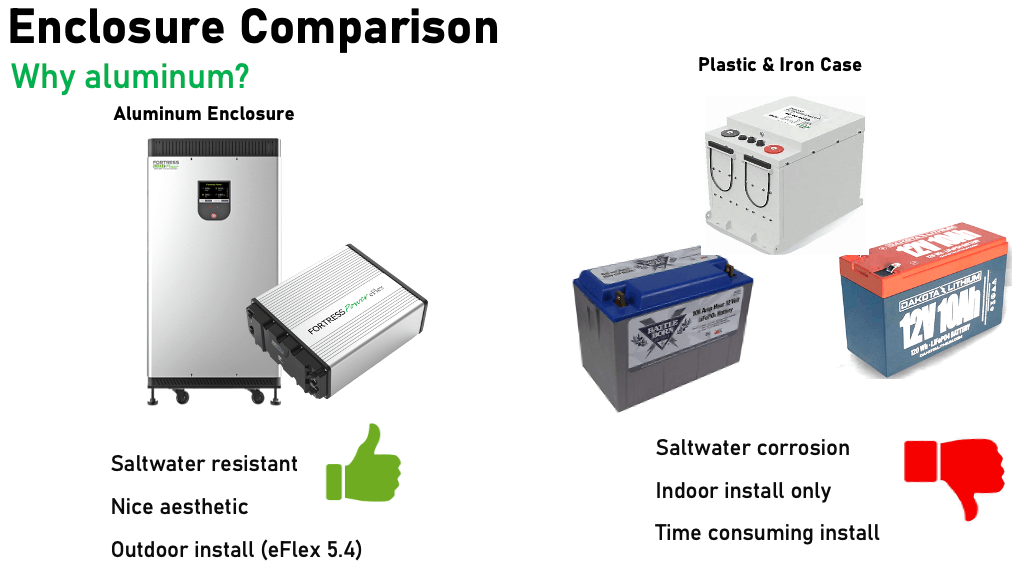
Sizing and Designing
At GoGreenSolar, sizing and designing is a collaborative process. We discuss homeowners’ needs and budgets and work with them to create the system that best meets both.
When homeowners call GoGreenSolar, their expectations for their solar system are reviewed – do they want full off-grid, occasional off-grid, or grid-assist scenarios? There are three areas that you must consider:
- The peak demand on the inverter in watts or amps
- The daily energy totals in kilowatt-hours
- The nightly usage in kilowatt-hours
The daily energy totals help to size the solar array needed. Then, a portion of that – approximately 75% – is taken to size the battery bank. Most people size a battery bank to one cycle (one night’s worth of power), assuming the sun always comes up the next day!
One important thing to note is that lithium batteries have an amperage limit. So typically, on many systems we’ve designed, we’ll use three eFlex units to cover the charge capability of the inverter. That gives customers about 15 kilowatt-hours of energy storage, which is pretty good for the average home.
For example, a refrigerator may use about two-kilowatt hours a day. Other uses are typically intermittent, like garage door openers and well pumps. Usage of small applications like LED lights, WiFi, routers and cell phone chargers are so small that they’re not worth considering as energy drains.
The maximum current limit on the battery is also considered for both charging and discharging (output). For example, an eFlex 5.4 kWh has a max continuous charging current of 55 A and a maximum continuous discharge of 68 A. In contrast, an eVault 18.4 kWh has a maximum continuous charging current of 150 A with a maximum continuous discharge of 180 A.
Charging current is normally the more likely limitation. While most charging happens continuously for hours, most high current discharging occurs intermittently. We have found that most of our systems require a minimum of one eVault or three @ 5.4 eFlex.
GoGreenSolar Resources
Fortress Power Sizing Resources


